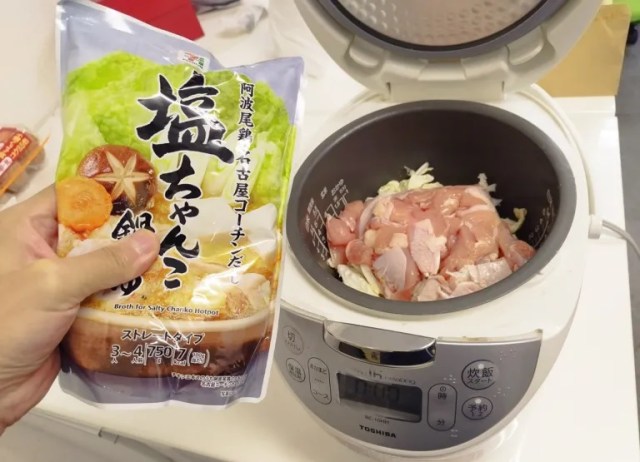
If you don’t have a team of sumo wrestlers to cook chanko nabe for you, will a rice cooker do the job for a one-person hot pot meal?
Given their girth, you might expect sumo wrestlers’ diet to consist of delicious, high-calorie foods. You’d actually be only half right, though. Yes, in order to build body weight sumo wrestlers need to eat a lot, which is definitely easier to do if the food you’re eating tastes great, but sumo wrestlers are also professional athletes, so they need to build muscle too, not just fat.
Because of that, the staple food in the sumo wrestler diet is a hot pot dish called chanko nabe, a stew with a chicken and/or bonito-stock broth and a mixture of meat (primarily chicken) and vegetables. It’s actually a healthy, balanced meal, with the reason sumo wrestlers put on weight having much more to do with how much of it they eat as opposed to the calorific density of the ingredients themselves.
Chanko nabe is such a part of sumo culture that chanko-making duty is part of the daily list of responsibilities at sumo training dormitories (called “stables”), with designated wrestlers for each day tasked with preparing and serving the stew. But what about those of us who find ourselves craving chanko but don’t have an institutionalized hot pot-producing protocol as part of our lifestyles? What about, say, our Japanese-language reporter Seiji Nakazawa, who doesn’t even own a regular cooking pot, and who, after a long day at work, sometimes is feeling too lazy to make even a single cut with a kitchen knife?
No problem! Because even if you don’t have a junior sumo wrestler to make chanko for you, you can delegate the majority of the work to your rice cooker!
At least, that was Seiji’s theory after the successful results of his attempt to cook sukiyaki in a rice cooker while expending the least amount of effort possible. However, there’s an important difference between sukiyaki and chanko, as you might notice when you look at the ingredients Seiji used.
● Pre-cut chicken (385 grams [13.6 ounces])
● Pre-sliced vegetable pack (Chinese cabbage, green onion, carrots, bean sprouts)
● Chanko nabe broth (750 grams [26.5 ounces])
● Udon noodles
● Eggs (optional)
See, while sukiyaki uses thin-sliced beef, chanko instead calls for chunks of chicken. Seiji wasn’t sure if these larger, thicker pieces of meat would cook properly in the rice cooker. He was sure, though, that he didn’t want to go to the hassle of actually sitting there and stirring the stew as it cooked, so he kept his fingers figuratively crossed as he went through the bare-minimum steps he was willing to do. First, he tossed the vegetables into the rice cooker pot…
…then he added the chicken…
…and poured in the broth.
Now it was time to turn things over to the rice cooker, so Seiji closed the lid, hit the start button, and let everything cook for the standard 45-minute rice-cooking cycle.
And when that time was up…
…Seiji had chanko nabe!
OK, so maybe we should have cleaned up the sides of the pot a little before snapping a photo, but we were pretty excited to see how it tasted, and it did not disappoint! Everything, including the chicken, was cooked all the way through, with all of the ingredients’ respective juices blending together with the initial broth for a rich combination of flavors. By leaving the rice cooker plugged in as Seiji ate, everything stayed nice and warm too.
It’s customary to finish off a chanko nabe meal by pouring some of the leftover broth over white rice or udon noodles. Seiji opted for the latter, and once again decided to cook them in the rice cooker, tossing in a pack of noodles and letting them cook for five minutes.
▼ Like many rice cookers, ours doesn’t allow you to set the timer in such small increments, so Seiji timed five minutes on his phone and then hit the stop button.
Once again, the rice cooker adeptly adapted its role, rewarding Seiji with nicely cooked udon to which he then added a raw egg, as is often the style in Japan, though not an absolute necessity.
So yes, if you don’t have a team of junior sumo wrestlers making chanko nabe for you, a rice cooker is a viable substitute if you don’t want to do any actual cooking yourself.
Photos ©SoraNews24
● Want to hear about SoraNews24’s latest articles as soon as they’re published? Follow us on Facebook and Twitter!
[ Read in Japanese ]

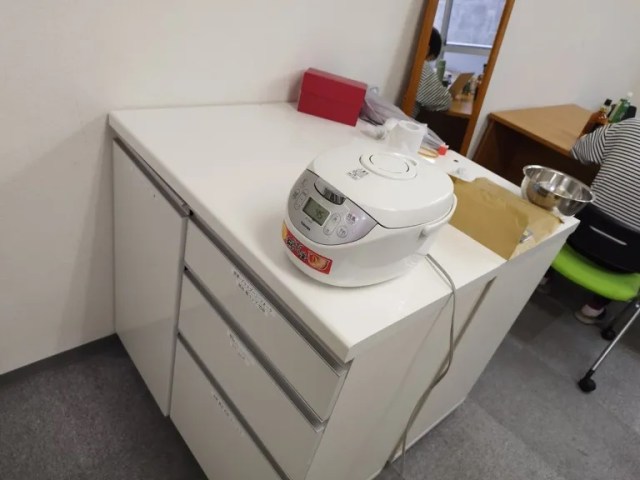
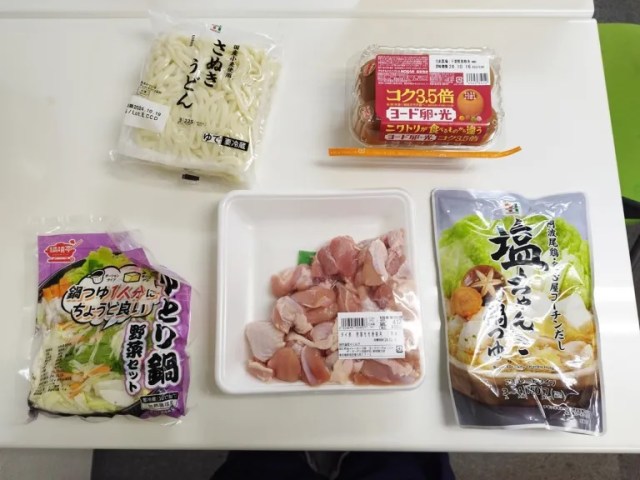
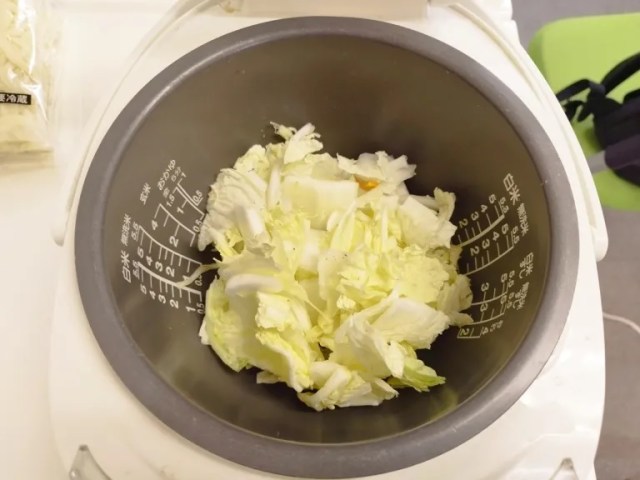
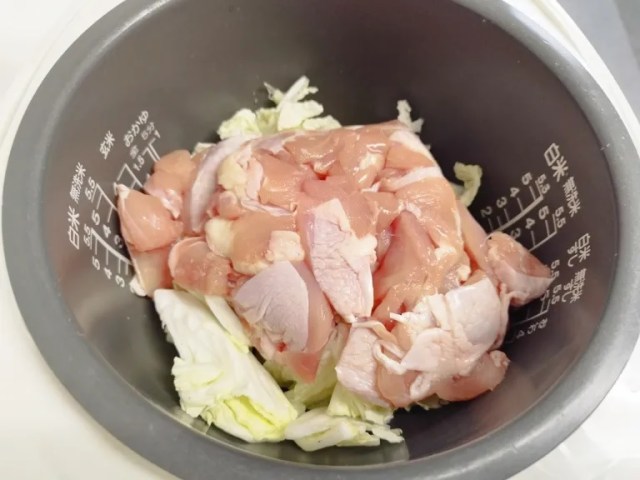
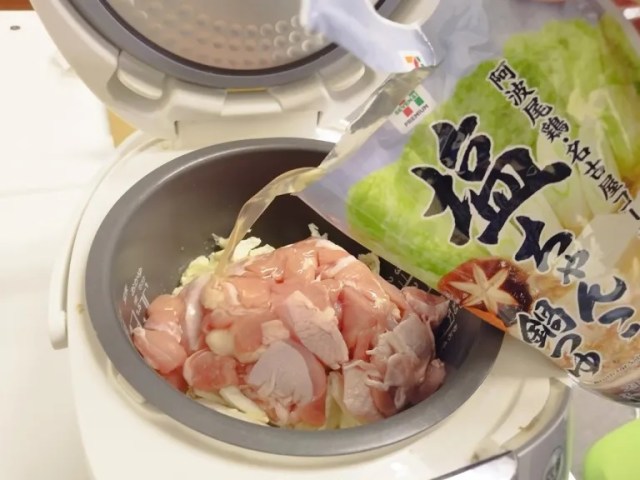
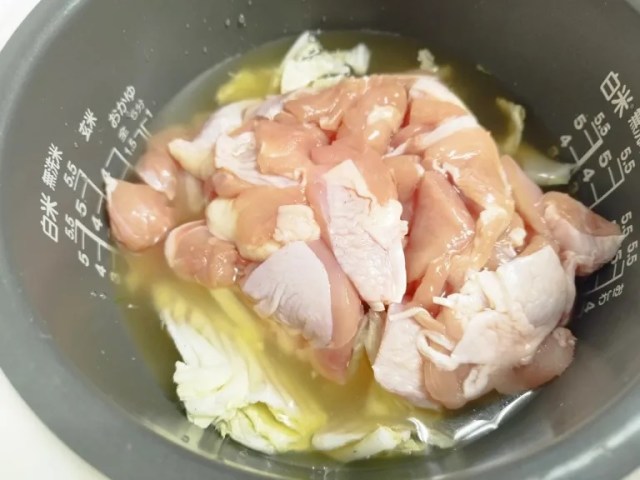
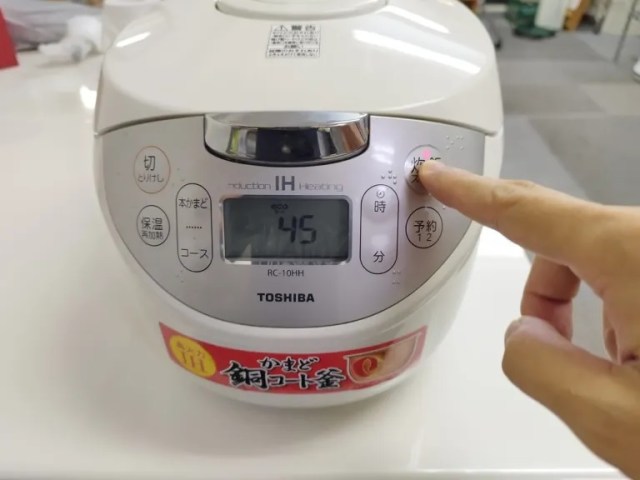
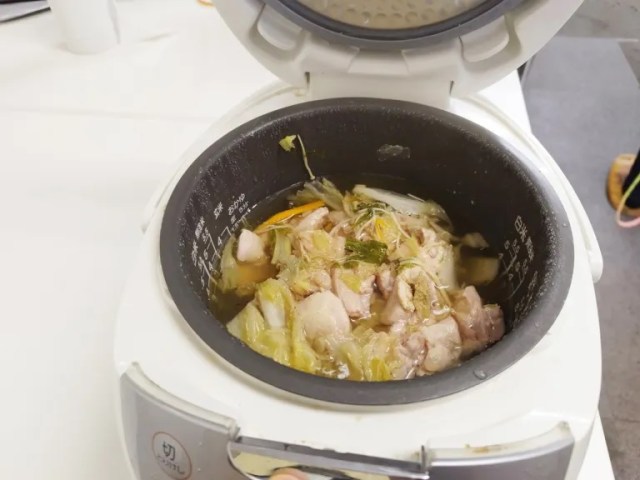
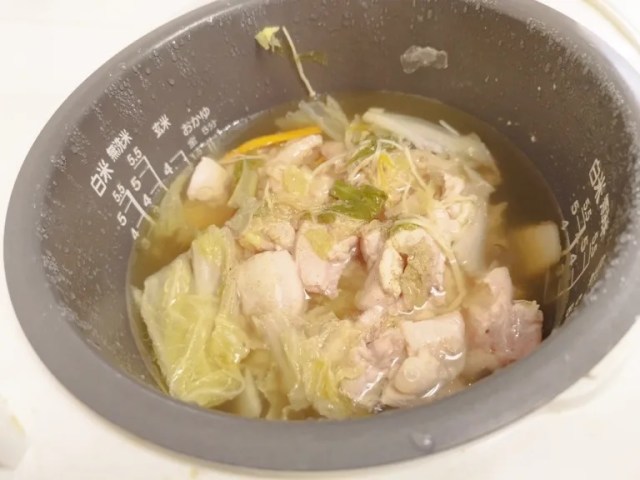
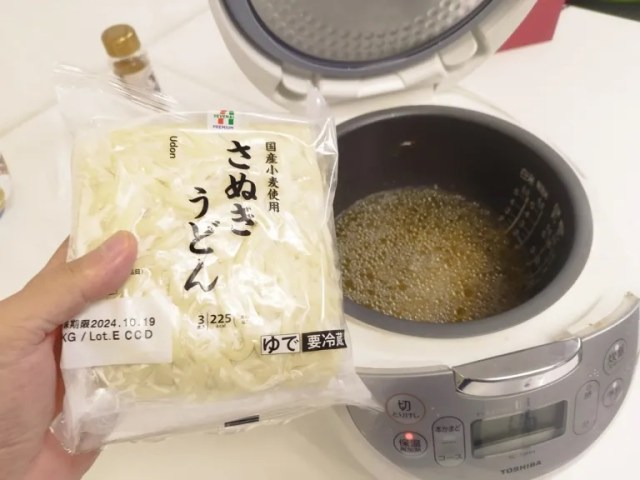
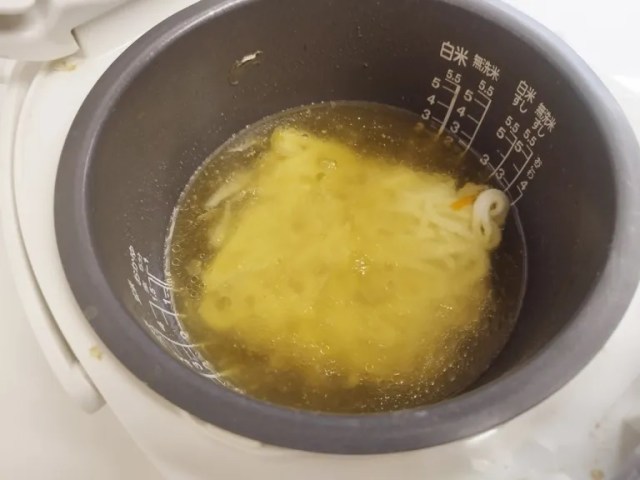
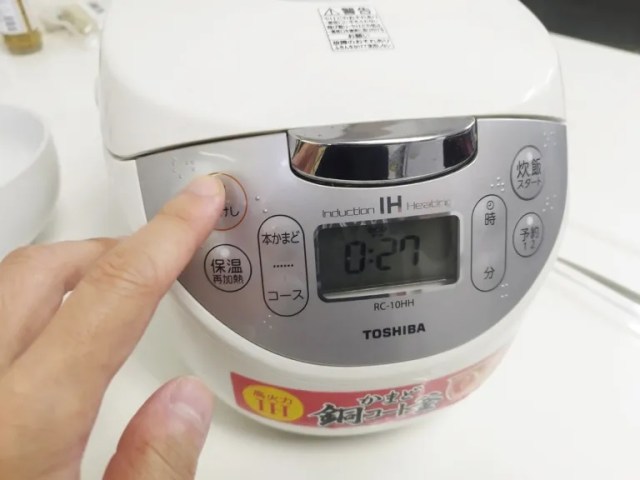
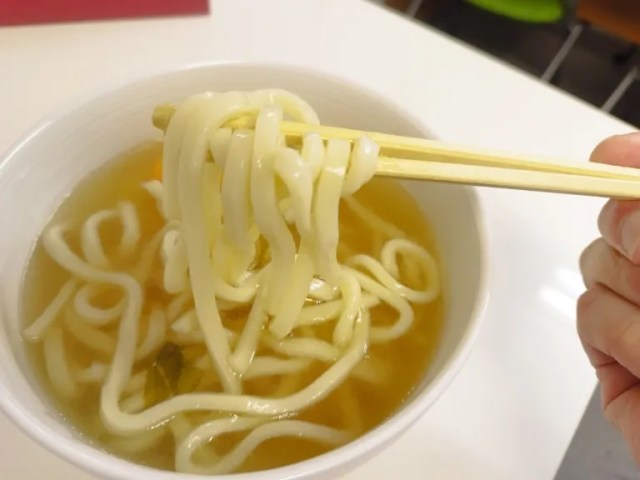
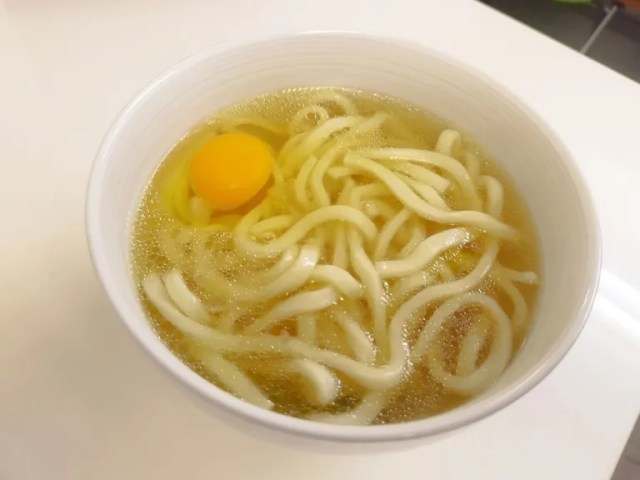
 Ultimate lazy sukiyaki – Can you make the king of Japanese hot pots in a rice cooker?【Taste test】
Ultimate lazy sukiyaki – Can you make the king of Japanese hot pots in a rice cooker?【Taste test】 Can you make KFC takikomi gohan in a rice cooker, and is it something worth eating?【SoraKitchen】
Can you make KFC takikomi gohan in a rice cooker, and is it something worth eating?【SoraKitchen】 Sumo training hall chef shares a secret cream stew ingredient his wrestlers love【Taste test】
Sumo training hall chef shares a secret cream stew ingredient his wrestlers love【Taste test】 Chicken McNugget rice cooker rice — Can it beat KFC rice cooker rice?【SoraKitchen】
Chicken McNugget rice cooker rice — Can it beat KFC rice cooker rice?【SoraKitchen】 Japanese chanko ramen restaurant contains a moving relic from the World Trade Center
Japanese chanko ramen restaurant contains a moving relic from the World Trade Center Cup Noodle tries an authentic Jiro-style ramen, but something’s not quite right
Cup Noodle tries an authentic Jiro-style ramen, but something’s not quite right We revisited Sweets Paradise after a decade to see if Japan’s dessert buffet still delivers
We revisited Sweets Paradise after a decade to see if Japan’s dessert buffet still delivers That time Seiji called JASRAC to ask why he didn’t get paid royalties for his song being on TV
That time Seiji called JASRAC to ask why he didn’t get paid royalties for his song being on TV 7-Eleven Japan’s ramen-cooking robot whipped us up a bowl of noodles【Taste test】
7-Eleven Japan’s ramen-cooking robot whipped us up a bowl of noodles【Taste test】 What did Shibuya really look like after the crowds on New Year’s Day?
What did Shibuya really look like after the crowds on New Year’s Day? Our team of five reporters try to turn themselves into Japanese heartthrob Kimutaku【Photos】
Our team of five reporters try to turn themselves into Japanese heartthrob Kimutaku【Photos】 Survey finds more than 70 percent of Japanese children have an online friend
Survey finds more than 70 percent of Japanese children have an online friend New Japanese menstrual product seeks to help women spot unidentified iron deficiencies
New Japanese menstrual product seeks to help women spot unidentified iron deficiencies Combining all of Nissin’s new Cup Noodle series into one powerful bowl of ramen
Combining all of Nissin’s new Cup Noodle series into one powerful bowl of ramen Japanese osechi New Year’s meal lucky bag gives us way more than we bargained for
Japanese osechi New Year’s meal lucky bag gives us way more than we bargained for Starbucks Japan ready to get Year of the Horse started with adorable drinkware and plushies【Pics】
Starbucks Japan ready to get Year of the Horse started with adorable drinkware and plushies【Pics】 7 great places to see Mt. Fuji from without having to climb it
7 great places to see Mt. Fuji from without having to climb it Cyberpunk anime meets traditional culture in Ghost in the Shell gold leaf Japanese changing screens
Cyberpunk anime meets traditional culture in Ghost in the Shell gold leaf Japanese changing screens Hayao Miyazaki says Happy New Year to Studio Ghibli fans with new art for Year of the Horse
Hayao Miyazaki says Happy New Year to Studio Ghibli fans with new art for Year of the Horse Hello Kitty Choco Egg figures are an adorable trip through three periods of Japanese pop culture【Pics】
Hello Kitty Choco Egg figures are an adorable trip through three periods of Japanese pop culture【Pics】 We found possibly the quietest Japanese-style hotel in Tokyo’s bustling Shinjuku district
We found possibly the quietest Japanese-style hotel in Tokyo’s bustling Shinjuku district Sumo Sanrio! Hello Kitty and pals team up with Japan Sumo Association for new merch【Pics】
Sumo Sanrio! Hello Kitty and pals team up with Japan Sumo Association for new merch【Pics】 Japan’s oldest largetooth sawfish in captivity back on display in Mie Prefecture
Japan’s oldest largetooth sawfish in captivity back on display in Mie Prefecture More Than a Capsule Stay: Why Solo Travelers Choose “global cabin Yokohama Chinatown”
More Than a Capsule Stay: Why Solo Travelers Choose “global cabin Yokohama Chinatown” 7-Eleven Japan starts new temporary luggage storage service in over 300 branches
7-Eleven Japan starts new temporary luggage storage service in over 300 branches Disillusionment at Tsukiji’s tourist-target prices led us to a great ramen restaurant in Tokyo
Disillusionment at Tsukiji’s tourist-target prices led us to a great ramen restaurant in Tokyo Starbucks teams up with 166-year-old Kyoto doll maker for Year of the Horse decorations【Photos】
Starbucks teams up with 166-year-old Kyoto doll maker for Year of the Horse decorations【Photos】 Tokyo considering law requiring more trash cans following litter increase in heavily touristed area
Tokyo considering law requiring more trash cans following litter increase in heavily touristed area Tokyo’s Tsukiji sushi neighborhood asks tour groups to stay away for the rest of the month
Tokyo’s Tsukiji sushi neighborhood asks tour groups to stay away for the rest of the month Tokyo event lets you travel back in time, for free, to celebrate 100 years since Showa era start
Tokyo event lets you travel back in time, for free, to celebrate 100 years since Showa era start Sanrio theme park in Japan announces plans to expand into a Sanrio resort
Sanrio theme park in Japan announces plans to expand into a Sanrio resort Japan may add Japanese language proficiency, lifestyle classes to permanent foreign resident requirements
Japan may add Japanese language proficiency, lifestyle classes to permanent foreign resident requirements Stamina-destroying “Paralysis Noodles” are Tokyo’s newest over-the-top ramen innovation
Stamina-destroying “Paralysis Noodles” are Tokyo’s newest over-the-top ramen innovation Survey asks foreign tourists what bothered them in Japan, more than half gave same answer
Survey asks foreign tourists what bothered them in Japan, more than half gave same answer Japan’s human washing machines will go on sale to general public, demos to be held in Tokyo
Japan’s human washing machines will go on sale to general public, demos to be held in Tokyo Japan’s deadliest food claims more victims, but why do people keep eating it for New Year’s?
Japan’s deadliest food claims more victims, but why do people keep eating it for New Year’s? We deeply regret going into this tunnel on our walk in the mountains of Japan
We deeply regret going into this tunnel on our walk in the mountains of Japan Studio Ghibli releases Kodama forest spirits from Princess Mononoke to light up your home
Studio Ghibli releases Kodama forest spirits from Princess Mononoke to light up your home Major Japanese hotel chain says reservations via overseas booking sites may not be valid
Major Japanese hotel chain says reservations via overseas booking sites may not be valid Put sesame oil in your coffee? Japanese maker says it’s the best way to start your day【Taste test】
Put sesame oil in your coffee? Japanese maker says it’s the best way to start your day【Taste test】 No more using real katana for tourism activities, Japan’s National Police Agency says
No more using real katana for tourism activities, Japan’s National Police Agency says Starbucks Japan reveals new sakura drinkware collection, inspired by evening cherry blossoms
Starbucks Japan reveals new sakura drinkware collection, inspired by evening cherry blossoms Updated cherry blossom forecast shows extra-long sakura season for Japan this year
Updated cherry blossom forecast shows extra-long sakura season for Japan this year Did you know your rice cooker is also a ramen rice cooker?【SoraKitchen】
Did you know your rice cooker is also a ramen rice cooker?【SoraKitchen】 Tokyo Comic-Con wasn’t just fun, it was delicious, and here’re our top picks from its food booths
Tokyo Comic-Con wasn’t just fun, it was delicious, and here’re our top picks from its food booths You can take on sumo wrestlers and drink all the whiskey you want at Tokyo’s new sumo restaurant
You can take on sumo wrestlers and drink all the whiskey you want at Tokyo’s new sumo restaurant A Japanese hot pot with an elevator inside is just what we need to make it through winter【Video】
A Japanese hot pot with an elevator inside is just what we need to make it through winter【Video】 Apparently Calpis is good in soup? We try mixing it in with hot pot【SoraKitchen】
Apparently Calpis is good in soup? We try mixing it in with hot pot【SoraKitchen】 Grand Sumo Tournament pop-up cafe pushes its way into Fukuoka
Grand Sumo Tournament pop-up cafe pushes its way into Fukuoka Japan’s new carriable one-person hot pot maker is our newest cooking gadget obsession
Japan’s new carriable one-person hot pot maker is our newest cooking gadget obsession Rice cooker recipe: 7-Eleven Japan’s Miso Mackerel Butter Rice is as tasty as it is easy
Rice cooker recipe: 7-Eleven Japan’s Miso Mackerel Butter Rice is as tasty as it is easy A faster, easier way to make cake: Use a rice cooker【SoraKitchen】
A faster, easier way to make cake: Use a rice cooker【SoraKitchen】 Rice cooker kuri gohan and two more super-easy chestnut recipes to make this fall【SoraKitchen】
Rice cooker kuri gohan and two more super-easy chestnut recipes to make this fall【SoraKitchen】 Kaki gohan – A super-easy, super-tasty rice cooker treat to make this autumn【Recipe】
Kaki gohan – A super-easy, super-tasty rice cooker treat to make this autumn【Recipe】 Why throw away your leftover ramen broth when you can use it to make awesome ramen rice instead?
Why throw away your leftover ramen broth when you can use it to make awesome ramen rice instead? Rice cooker cooking: Bacon onion rice is amazingly easy, awesomely delicious
Rice cooker cooking: Bacon onion rice is amazingly easy, awesomely delicious Let’s cook this jet-black chicken in the rice cooker and see what happens【SoraKitchen】
Let’s cook this jet-black chicken in the rice cooker and see what happens【SoraKitchen】 What happens when you cook beer with potato chips in a rice cooker?
What happens when you cook beer with potato chips in a rice cooker?
Leave a Reply